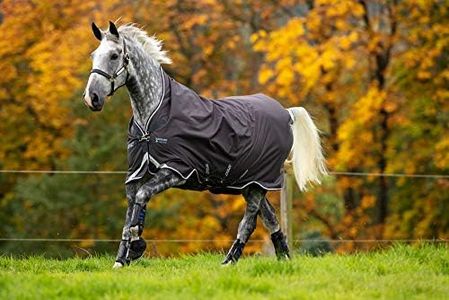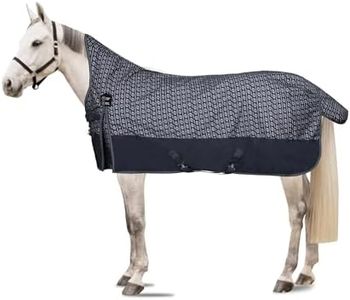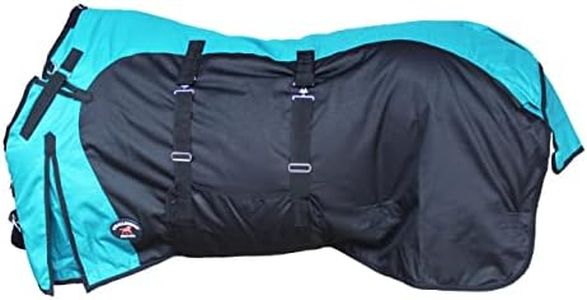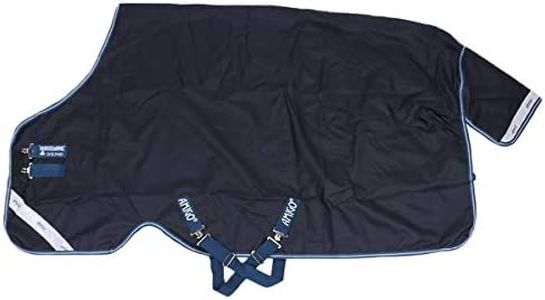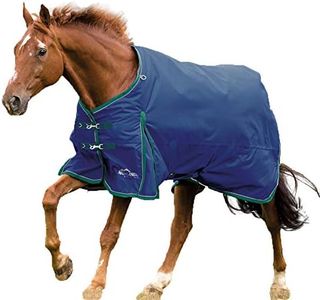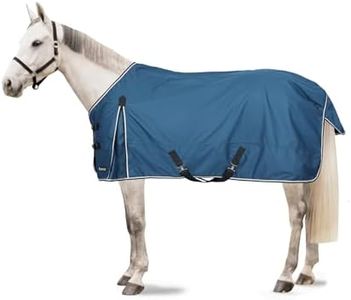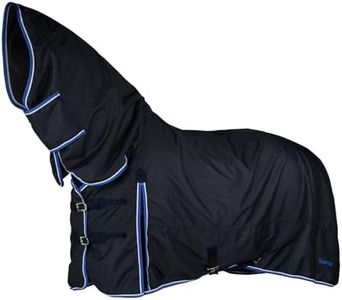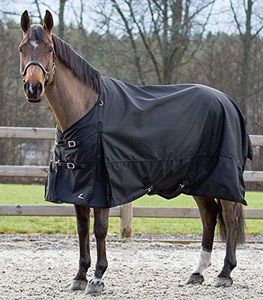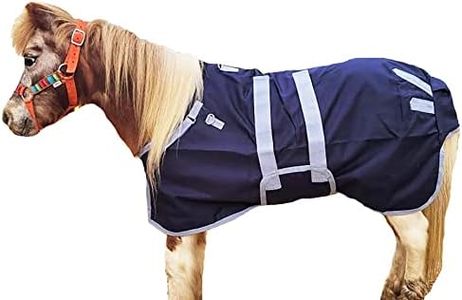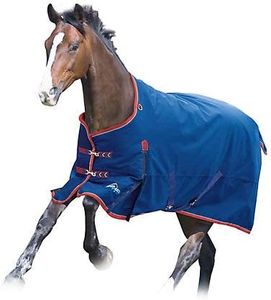We Use CookiesWe use cookies to enhance the security, performance,
functionality and for analytical and promotional activities. By continuing to browse this site you
are agreeing to our privacy policy
10 Best Waterproof Horse Sheet
From leading brands and best sellers available on the web.Buying Guide for the Best Waterproof Horse Sheet
Choosing the right waterproof horse sheet can really make a difference in your horse's comfort and health, especially during wet seasons. The main goal is to keep your horse dry while also making sure the sheet fits well and suits your horse's lifestyle and the climate. To find your best match, pay attention to the key features and specifications that influence protection, comfort, and durability.Waterproof MaterialWaterproof material is the outer layer of the horse sheet that prevents rain and moisture from getting through to your horse’s coat. This feature is essential because it keeps your horse dry and comfortable even in heavy downpours. Materials are usually rated based on their water resistance, and can be broken down from basic water-repellent types to fully waterproof fabrics with sealed seams. If your horse will be outside in all weather, look for sheets labeled as waterproof and breathable, rather than just water-resistant, to ensure best protection.
BreathabilityBreathability refers to how well the sheet allows moisture and heat from your horse’s body to escape, preventing sweat and overheating underneath the cover. This is an important specification because even when it's raining, your horse needs to stay cool and dry inside the sheet. Higher breathability is best for horses that are active, turned out most of the day, or live in milder, humid climates. If your horse tends to overheat or if weather frequently changes, prioritize a sheet with good breathability.
Denier RatingDenier rating measures the thickness and durability of the sheet's fabric, which impacts how tough and long-lasting the material is. Higher denier values (like 1200D or above) mean the fabric is thicker, sturdier, and more resistant to tears, making it a good choice for horses that are playful, live in groups, or are turned out in environments with trees or fences. Lower denier sheets (such as 600D) are lighter and may suit horses in low-risk areas or those supervised closely. Your horse’s environment and behavior should guide your denier choice.
Fit and AdjustabilityFit and adjustability involve how well the sheet contours to your horse’s body and stays secure during movement. A good fit prevents rubbing, slipping, or pressure points, which could lead to discomfort or injury. Common adjustability features include shoulder gussets, leg straps, adjustable chest closures, and tail flaps. If your horse moves a lot or spends time outdoors, look for sheets with several adjustment points and extra features for a snug, stable fit.
Lining MaterialLining material is the inner fabric that touches your horse’s coat. It often affects both comfort and moisture-wicking ability. Linings can range from smooth polyester types that minimize rubbing and keep the coat shiny, to cotton blends that are softer on sensitive skin. If your horse has a sensitive coat or is prone to rubs, opt for smoother linings. In cooler weather or for clipped horses, a slightly insulated lining could help maintain warmth while staying dry.
Weight (Fill or No Fill)Weight refers to whether the sheet is a lightweight (no fill) or insulated (with fill) blanket. Waterproof horse sheets are typically no-fill, meaning they don't offer extra warmth—just protection from water and wind. Choose a no-fill sheet for mild weather or wet climates where your horse doesn't need extra warmth. If you’re shopping for colder rains, you might look for a combination sheet that has added fill for warmth.
